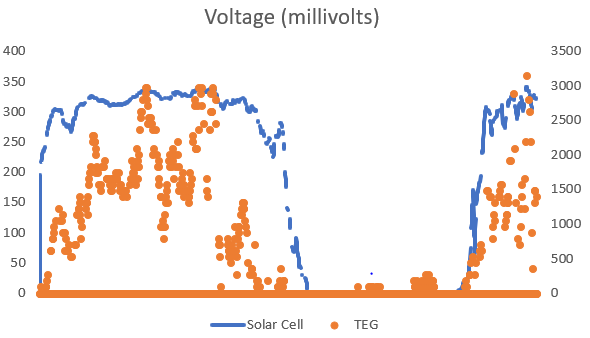So I created a fully assembled module using the instructions I posted for this module. I 3d printed and glue a go pro joint so that I could use a suction cup to suction is wherever I want.
I had the particle photon collect data all day.
The data showed that the solar cell got less than 5v but otherwise it seem to be operating well for a cloudy day.
The TEG modules only produced .3 volts instead of the 3-4 volts that I was hoping for. The TEG modules were glued to the panel with a thermal glue. I think I got such a low voltage because this was testing in Acadia so the weather was not that hot and sunny on the day. It was only 65 degrees at night and 75 during the day so they wouldn't have been environmental help to maintain a temperature difference. Furthermore the lower level of sunlight may have also made it hard for the panel to heat up from the radiation. Lastly I believe that the water chamber is not well insulated because of the PLA. I think I need to take more tips from the Yeti company so that I can seal the chamber extremely well. I think throughout the day the environment is more easily capable of heating up the water which decreases the temperature difference.
The good news I got from the data is that the trend clearly shows that the TEG voltage produced increases as the solar cell voltage increase throughout the day. This I believe proves the theoretical idea that the energy absorbed as heat throughout the day can help run these TEGs. The challenge is to now maintain a larger temperature difference.

Copoed from internal project log
Discussions
Become a Hackaday.io Member
Create an account to leave a comment. Already have an account? Log In.